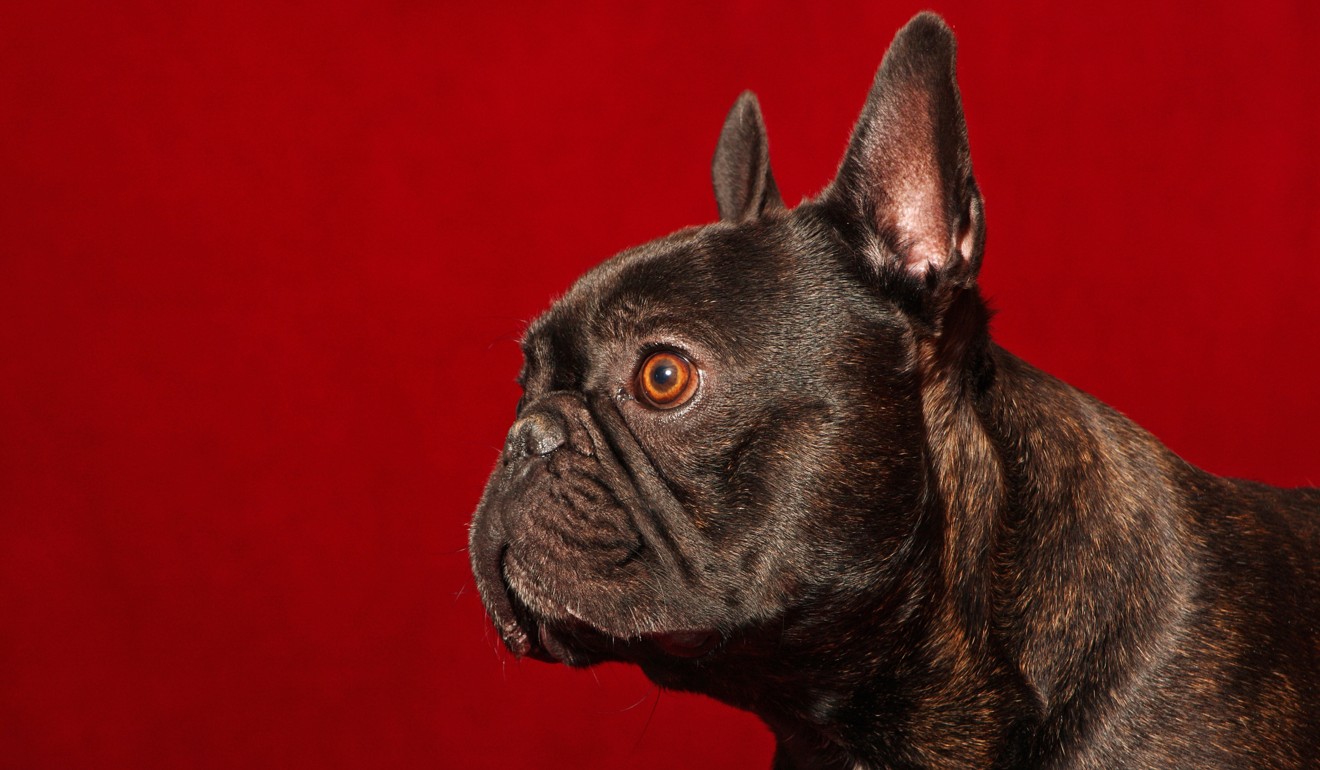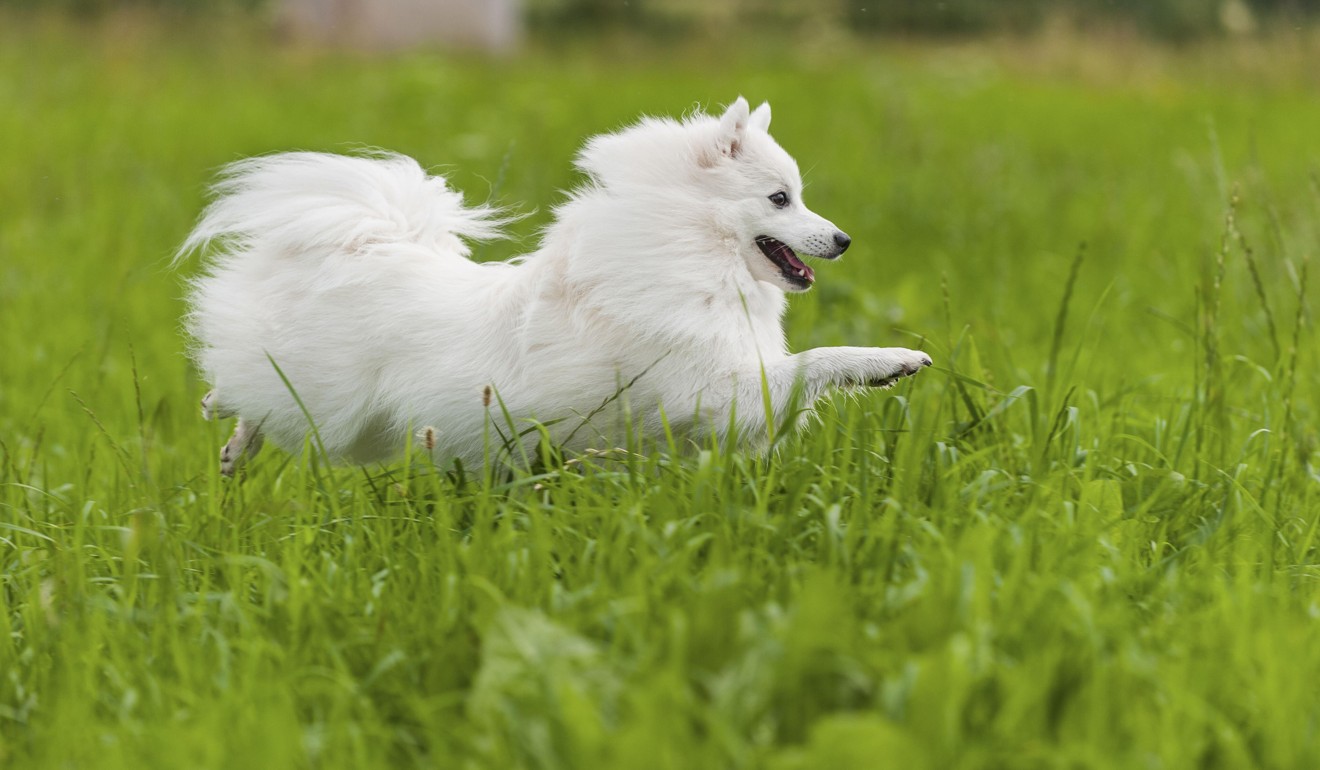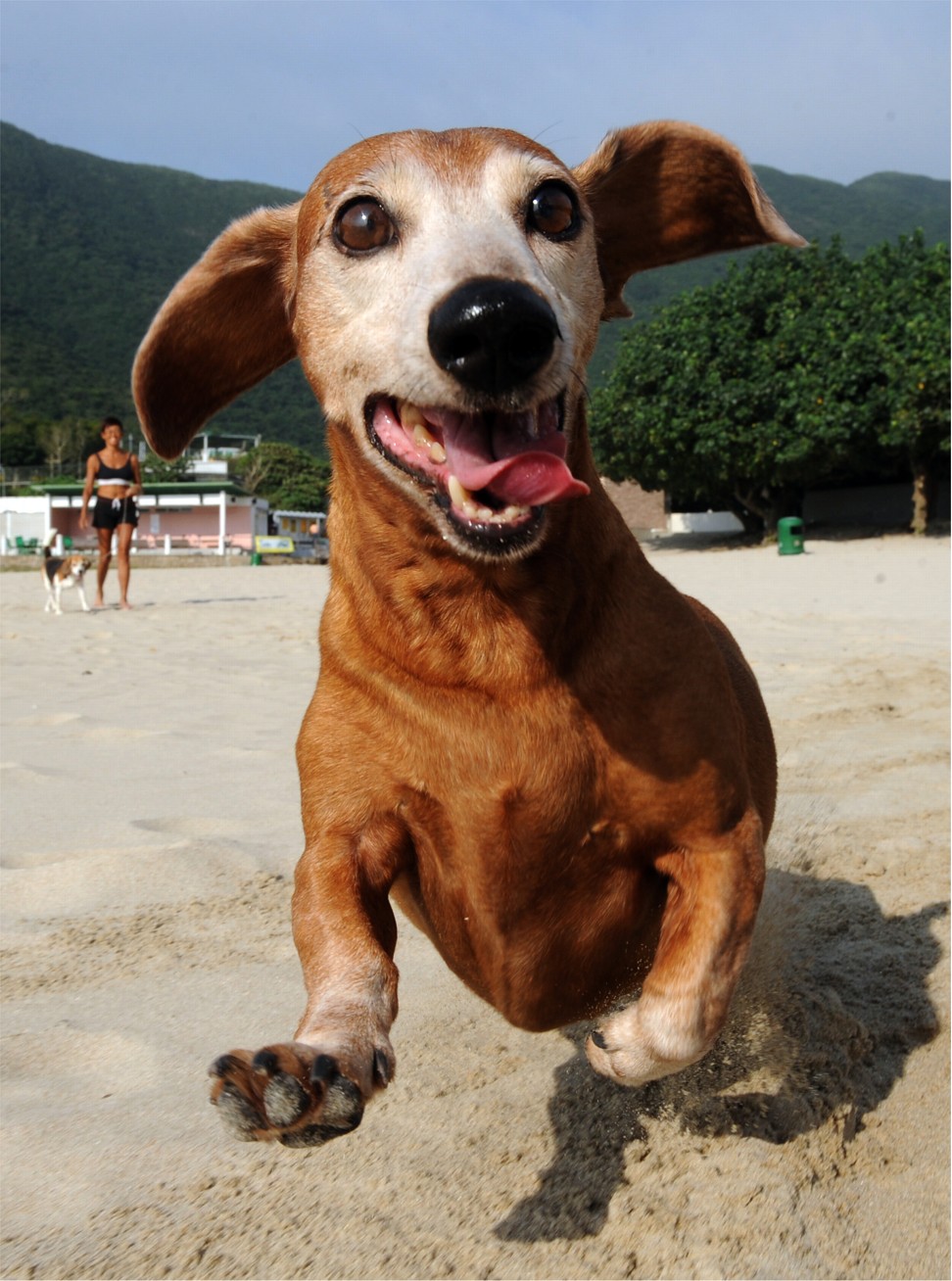
Summer and dogs: five things owners should not do in hot, humid places like Hong Kong
The humidity and heat of Hong Kong’s summers make it hard for dogs to keep cool. Local dog expert Eric Ko shares five things you should not do with your canine companion when you are out in the hot sun
Everyone should know that you don’t leave a dog in the car or walk it during the hottest part of the day during Hong Kong’s hot and humid summers – where temperatures can easily get up to the mid-30s (95 degrees Fahrenheit) and pollution makes it harder for dogs to cool themselves by panting.
But what else shouldn’t you be doing? There are many other things that owners should be aware of during these months, but might not realise until it’s too late.
‘Guide dogs welcome’ in 80 Hong Kong taxis, operator announces
With help from Eric Ko, a certified dog trainer and founder of the Dogaroo pet hotel in the city’s Mong Kok district, here are five more sweaty summer don’ts that every dog owner should be aware of.

Don’t walk on hot pavements
Besides panting, one of ways most dogs stay cool is by releasing heat through their paws. This becomes a problem in summer for dogs that are walked on pavements, because concrete gets considerably hotter than natural surfaces. The heat could even burn a dog’s paws.
“Sometimes, the outside temperature could be 35 degrees Celsius, but the pavement could be 45 degrees,” Ko says. He recommends feeling the ground with your hand to see how hot it is. If it is uncomfortable to touch it for more than a few seconds, it is probably too hot for your dog.

If your dog starts showing signs of heatstroke – excessive panting, walking slowly or refusing to walk at all – one thing to do is find a shaded place and use water to wet its paws. If your dog is small enough you could carry it.
Whatever you do, don’t think dog boots will solve the problem. They might stop your dog’s paws from burning, but they will trap more of the heat, making it even harder for the dog to cool down.
“This is especially the case if you use rubber or plastic boots,” Ko says. “These are designed to be used for things like hiking, or for hunting dogs, where the paws could be scratched.”

Don’t automatically shave all your dog’s hair off
When it’s sweltering and your dog is sprawled across your floor despite the fan being on its highest setting, it can be tempting to think it’s time to shave off its coat. However, this can be a bad idea.
First, dog skin burns much easier than human skin, and its coat protects them from UV rays and lowers the chance of skin cancer. It also protects them from bug bites which are more common in summer.
No ‘animal police’ division to be set up despite recent spike in cruelty
Second, a dog’s coat can actually help cool air circulate underneath it. It is important, though, that the dog is well-groomed – and for double-coated dogs, that any shed undercoat is well brushed out. If a dog’s coat is shaved too short, the surrounding air will flow above and away from the skin, reducing the cooling effect.
It is also possible that shaving could cause irreversible damage to the coat, a problem that depends on the breed. Pomeranians, for example, should never be shaved.
“We can cut a dog’s hair short, but must be careful not to shave it too much because all the protection will be gone,” Ko says. “Regular brushing and grooming is just as important. Matted and knotted hair will prevent the release of heat.”

Don’t swap hiking for the beach and think it’s OK
When summer hits, it’s time for the beach, right? For dog owners who love taking their pets out hiking with them in the colder months, it can be tempting to swap that activity for seemingly cooler alternatives like the beach or boat trips. The dogs will surely be happy too – some breeds, like Labradors and golden retrievers, just seem to love the water.
But such excursions can be just as dangerous as hot-weather hikes, as Ko explains.
“I heard of two golden retrievers recently who went out on a boat with their owners. They loved playing in the water, fetching toys – they were very happy. But after the trip, on their way back to the city, the two dogs died – they’d drunk too much of the salt water and died of dehydration.
“Because they swim, they’re also thirsty. So what do they do? Instinct – they drink seawater.”
Ko recommends giving dogs regular drinks of ordinary drinking water to keep them hydrated and less tempted to drink seawater. If the dog won’t stop, prevent them from going in the water.

Don’t ignore breed-specific dangers
Some breeds just weren’t built for extremely hot weather. Short-nosed dog breeds, for example, such as English and French bulldogs, pugs, and Pekinese have a much harder time cooling themselves because of their short nasal canals. The problem can be exacerbated by an abundance of energy.
Some dogs like pugs have so much energy. They’re so eager to play and they play fast. That makes it very easy for them to overheat
“Some dogs like pugs have so much energy. They’re so eager to play and they play fast. That makes it very easy for them to overheat,” Ko says.
For dogs bred to survive in extremely cold temperatures – such as huskies and samoyeds – summer can also be quite dangerous, though it depends on how many generations they are removed from ancestors bred in their native lands.
“If they have been imported directly from their native countries, then it can be very dangerous,” Ko says. “But for dogs that have already been bred over several generations in hotter climates, there is less danger.”
Pugs vs dachshunds: ultimate face-off in Hong Kong charity dog race
Ko recommends that owners of dogs not designed for hot temperatures be extra vigilant in the summer months. If they suspect their dog is getting too hot, find somewhere cool, take a rest and consider ending the walk.

Don’t let your dog off its leash so much
There are two reasons for this. First, after being cooped up at home, dogs can have a lot of energy to release. They just want to run around and play, and if they start to overheat they don’t know that they need to slow down. Owners need to be careful, and if they suspect their dog is going to get too hot, they should put them back on the leash and calm them down.
The power of ‘Doga’: How doing yoga with your dog ‘can help it overcome bad behaviour’
Second, the hot and humid weather brings more ticks. Dogs left to freely run through long grass, undergrowth or hedges are at a higher risk of encountering the tiny critters.
“Especially in places like Sai Kung, you get a lot of ticks,” Ko says. “If you let them off the leash to play around, it is easy for them to encounter ticks and bring them home. But even in a built-up area like Happy Valley, I know people who have gone out for walks in the street and bought ticks home.”
A combination of a tick- and flea-control product such as Frontline, a flea collar and a tick spray will give your dog the best protection during summer. Regular brushing will also help to uncover any bugs that have caught a ride indoors.
Catch Eric Ko in Cesar Millan’s Cesar’s Recruit: Asia Season 2 showing on the National Geographic Channel starting May 9.


